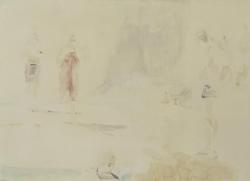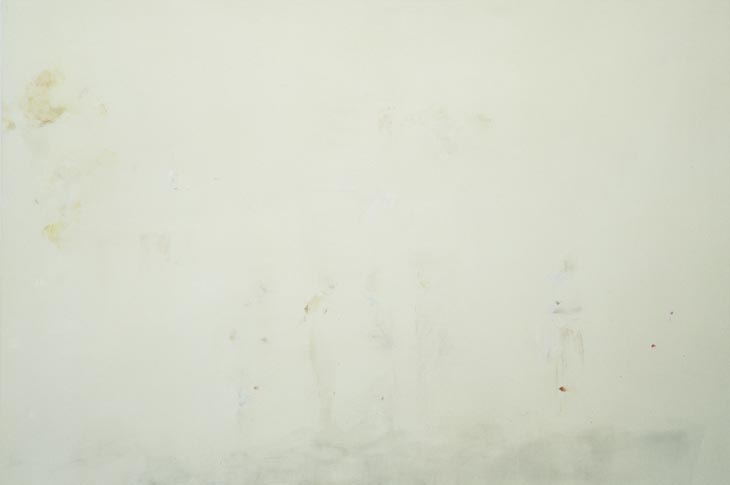

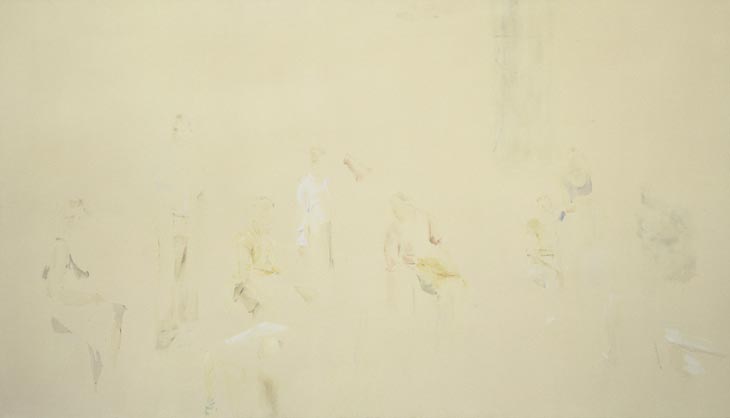
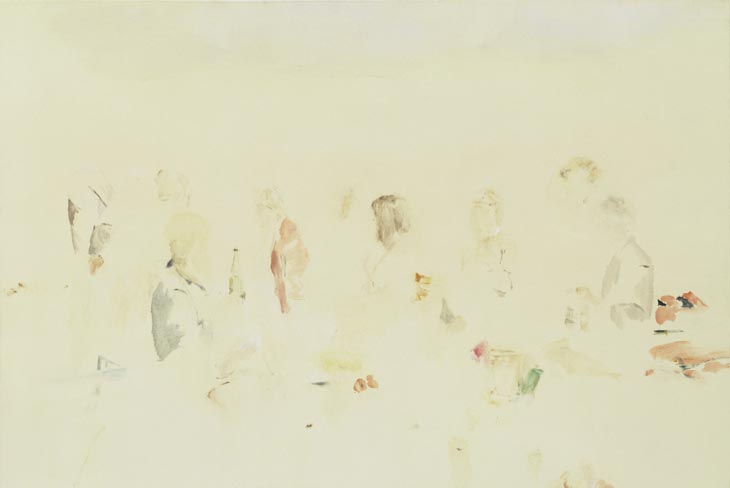
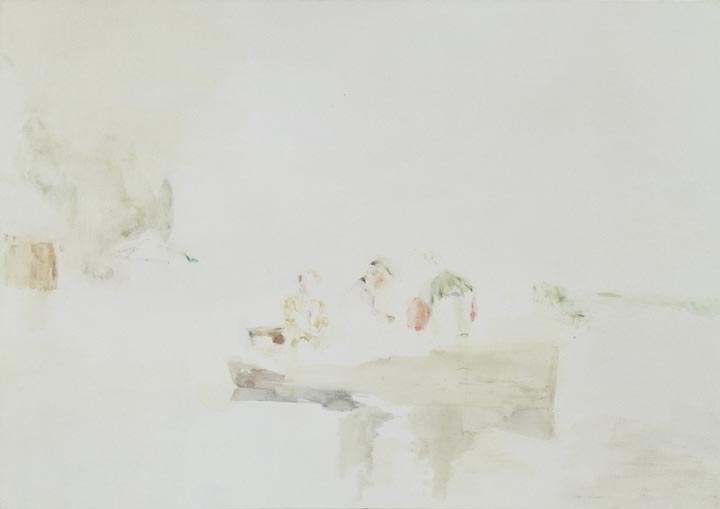

Maaike Schoorel
Though Schoorel’s paintings are developed from photographs, how she interprets these is very intuitive, as is the decision about what information to include or omit. Each brush mark and gesture is designed to refute concrete resolution; some appear as impalpable shadows or stains, while others have a slightly holographic effect. Schoorel drafts The Visit with an expert understanding of colour, and uses minute shifts in tone to magnify her painting’s ambience and evoke psychological reaction. “The colours come to you like music comes to you,” Schoorel explains. Her paintings are often initially ‘felt’ before they are ‘seen’; they provoke a subconscious recognition before they are understood visually.
Maaike Schoorel’s canvases are near invisible planes which invite sustained contemplation; from their soft, barely perceptible tones images will begin to appear, and eventually resolve as quite detailed scenes. Schoorel’s painterly apparitions are a result of the power of suggestion, her delicate gestures and subtly shifting hues provide only the scantest impressions, provoking the viewer’s subconscious to cogitate the visual cues. When looking at her paintings, not everyone sees the same things at first: your eye might catch a glimpse of a red apple which may lead you on to notice the shade of someone’s eye or hair, or vice versa. Schoorel sees her work as a way to explore the hierarchy of perception.
Schoorel has commented that “we are used to looking at images in high or instantaneous speed. Media such as television and the Internet present everything in a disjointed way. My paintings reveal themselves in slow time. I try to make images that have a sense of connection. For these paintings I worked from family photographs, but I was specifically interested in scenes which relate to genre painting, such as landscapes or group portraits. We are used to seeing these types of images, and my work changes the order of how we view them: once you discover one detail it will link to another, creating a sense of movement and interconnectedness.”
Looking at Schoorel’s images one has the sensation of looking at a projected or hovering presence in an illusory space beyond the flat picture plane. Executed in micro-thin layers her mark-making has the effect of being indelibly penetrated or melded into the fabric of the canvas. Her paintings suggest something that is simultaneously there, but not there, and draw the viewer in as an active participant in interpreting and decoding the image.






